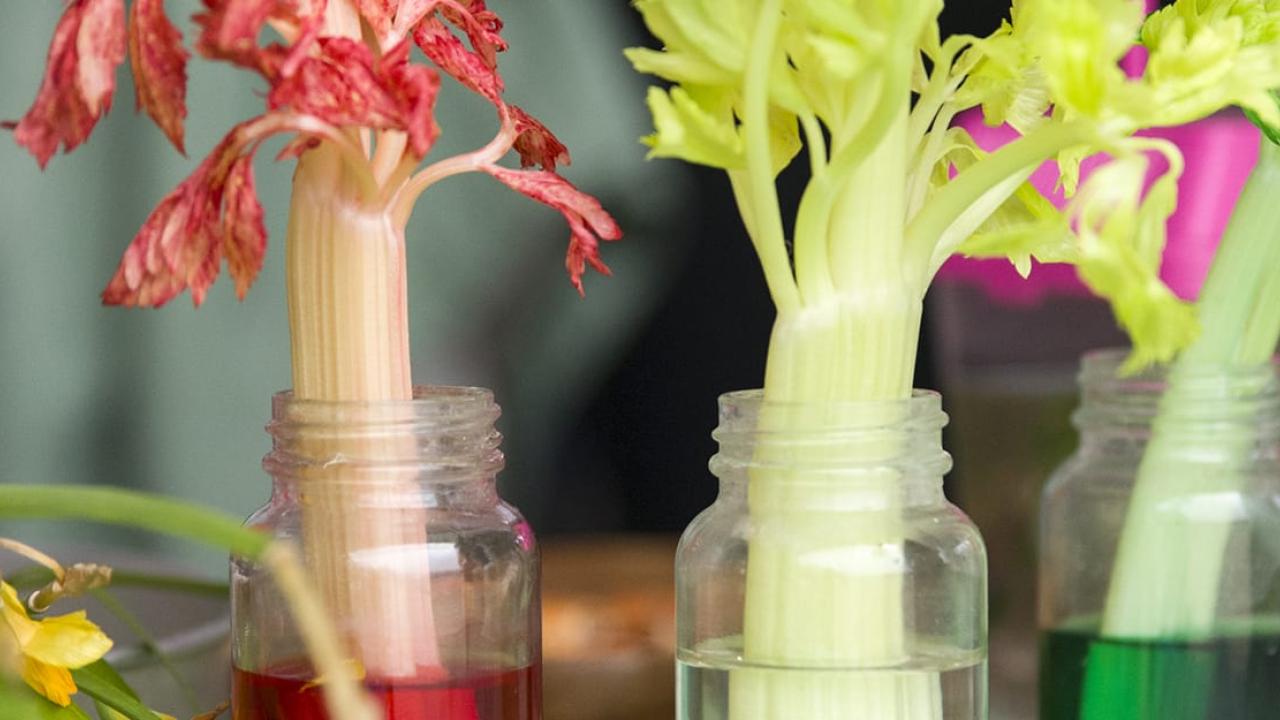

Learning
Garden Stories
Cozying up with five cool, rare books
Winter is a great season for bookworms—there’s nothing like a good book to keep you company during the colder months. And as far as stories go, the Rare Book Collection at the Chicago Botanic Garden’s Lenhardt Library is a true treat.
The Lenhardt Library acquired its Rare Book Collection from the Massachusetts Horticultural Society in 2002. These approximately 2,500 volumes represent primary sources in the world of botany and horticulture and give us a glimpse into the history of plants all the way back to ancient Greece.
For just a taste of what this collection offers, we asked Leora Siegel, Lenhardt Library’s senior director, to choose five of her top books from the Rare Book Collection—no easy feat. Below are her picks, in no particular order; each book is uniquely beautiful and impactful.
The Illustrated
Language of Flowers
by Anna Christian Burke, 1858
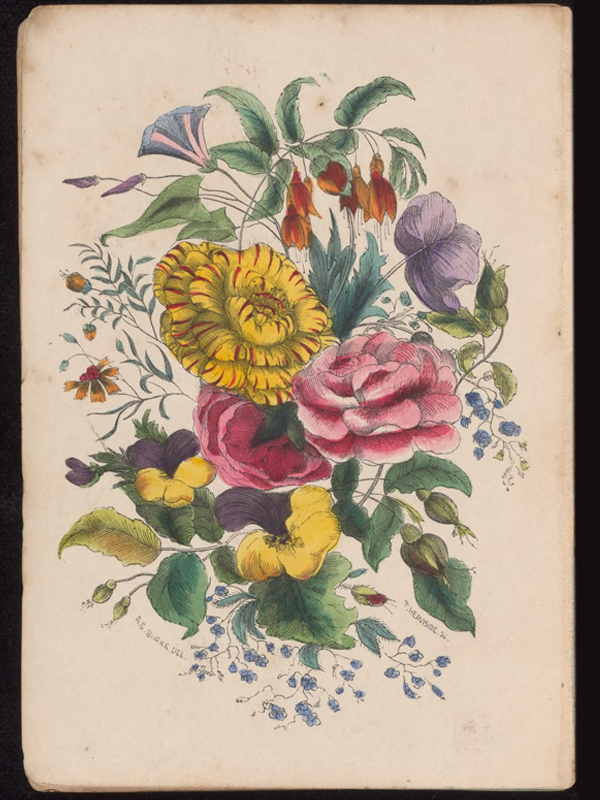
Image of a bouquet from The Illustrated Language of Flowers
In Victorian England, floriography—the language of flowers—was all the rage. Guides like this one endowed bouquets with a whole new cultural meaning, allowing the sender to craft a message and the recipient to interpret it. Featuring poetry, illustrations, and a full index of the meaning behind each flower, Burke’s volume is one of many nineteenth century language of flowers books in the Lenhardt Library’s collection.
Find the full digitized book here and the online catalog record here.
De Historia Plantarum;
De Causis Plantarum
by Theophrastus, 1483
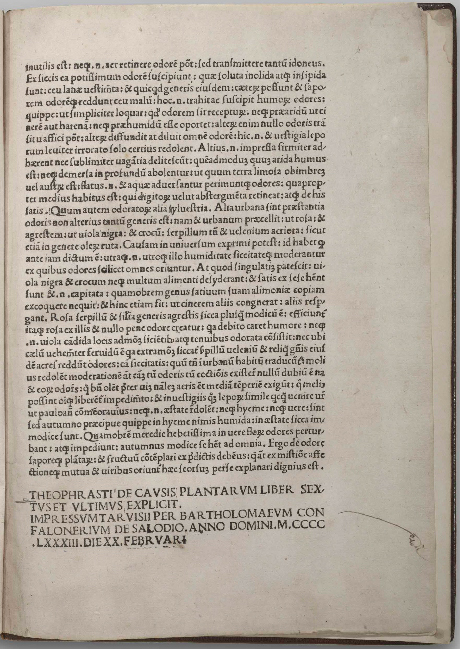
Pictured here, the colophon at the end of the text indicates the book’s publication information
Happy 540th birthday to the oldest book in the Lenhardt Library’s collection! Theophrastus lived from 371 to 287 B.C. in ancient Greece; his botanical writings on ancient Greek plants, originally preserved in Constantinople, were translated to Latin and published in northeastern Italy many centuries later, with this printing completed in 1483. The book explains the first known classifications of plants in the Western world, and its impact on botany has echoed throughout the centuries. Because this book was published before modern printing, it doesn’t look like the books we know today; it doesn’t use a title page, index, page numbers, or sections, and it has no illustrations—although early owners left marginalia for us to admire.
Find the full digitized book here and the online catalog record here.
Études De Fleurs Et De Fruits:
Peints D'après Nature
by Henriette Antoinette Vincent, 1820
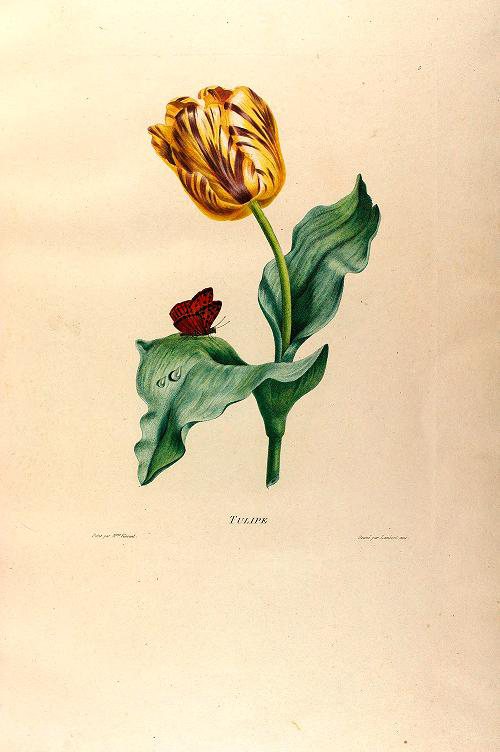
Madame Vincent’s tulip illustration, complete with butterfly and dew drops
This French book of botanical illustrations features 48 color plates depicting fruits and flowers. The true-to-life images include imperfections in the plants as well as details like ladybugs and dew drops, making them true art pieces as well as plant records. Madame Vincent, who exhibited her work in the Paris Salon and studied under master botanical artists, does not include roots, seeds, or reproductive plant parts in her illustrations; this was considered proper etiquette for women illustrators of her era. Only a few copies of this stunning book still exist today.
Find the full digitized book here and the online catalog record here.
Flora Peruviana, et Chilensis
by Hipólito Ruiz and José Pavón, 1798–1802
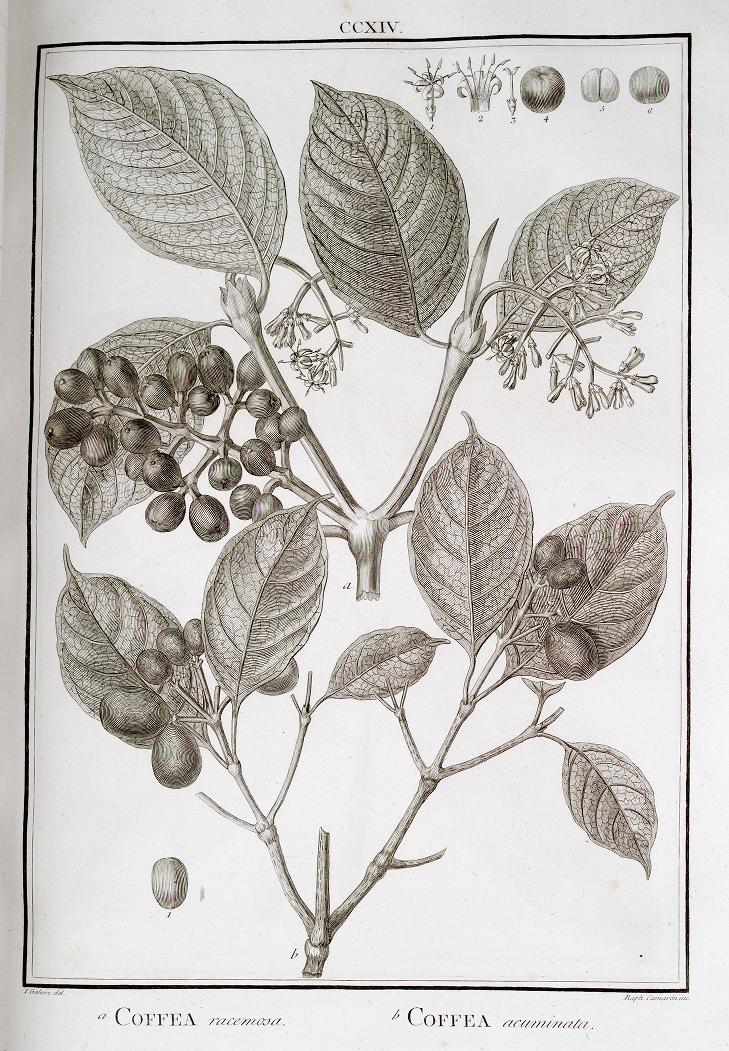
South American coffee plant as illustrated in Flora Peruviana, et Chilensis
Ruiz (botanist) and Pavón (pharmacologist), of Spain, introduced the European scientific community to South American flora after their 11-year expedition to Chile and Peru from 1777 to 1788. Sent by King Carlos III, they collected 3,000 specimens and identified about 500 new species. This volume, produced with the help of illustrators Joseph Bonete and Isidro Gálvez, includes not only botanical information but descriptors of landscape, weather, and the plants’ connections to native cultures, giving the information an ethnographic lens.
Find the full digitized book here via the Missouri Botanical Garden, and find the online catalog record here.
Water-Color Sketches of Plants of North America and Europe
by Helen Sharp, 1888–1910
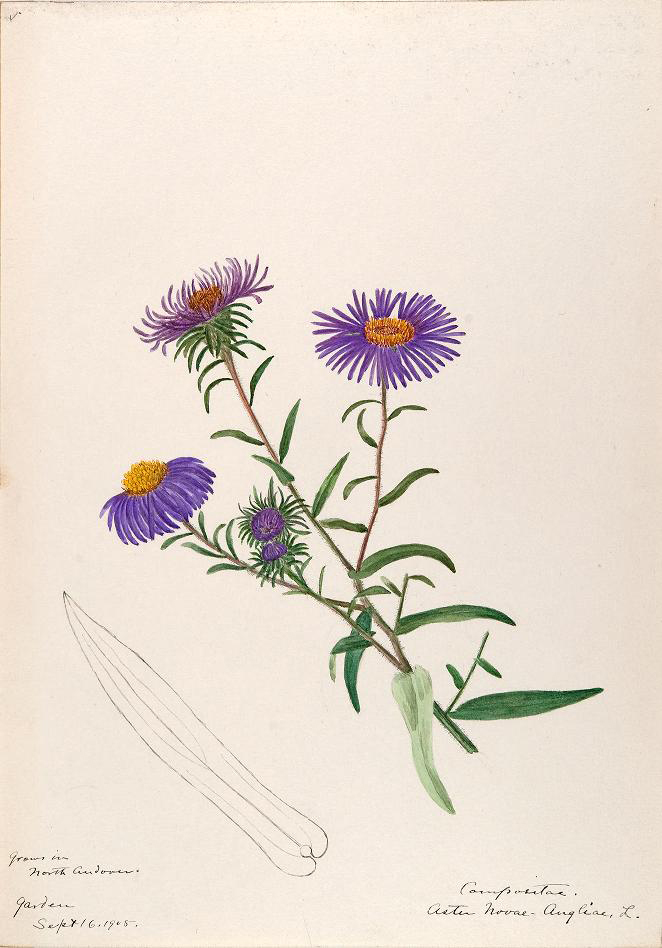
Helen Sharp’s illustration of a New England aster, from her 16th volume
Helen Sharp was a prolific botanist and artist who lived and worked in Massachusetts. Between 1888 and 1910, she produced 18 thoughtfully organized volumes of botanical illustrations created in watercolor with background pencil sketches. The first 16 volumes focus on plants common to Massachusetts and New England, with volumes 17 and 18 encompassing her travels to Europe and Bermuda. Her work combines beautiful artistic renderings with careful scientific information, representing an important natural history resource—particularly for native plants of New England.
Find the full digitized book here and the online catalog record here.
Want to see the library’s rare books for yourself?
All of the books featured here are digitized and linked above, but nothing quite compares with seeing a rare book in person.
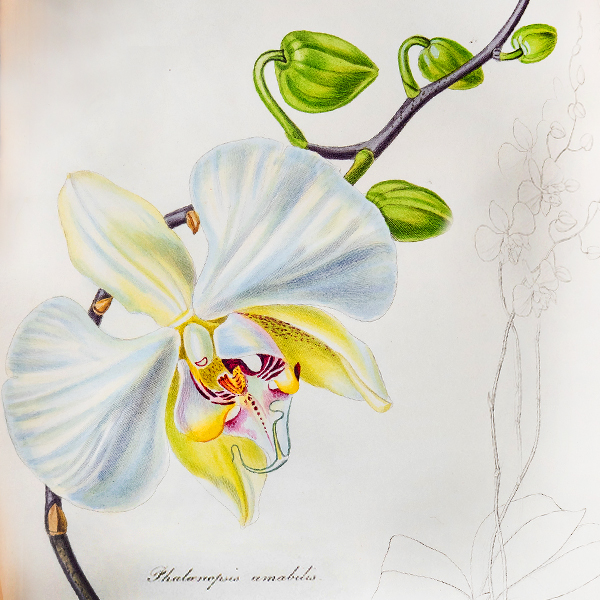
Visit the Lenhardt Library from noon to 4 p.m. Wednesday through Sunday to explore its full botanical collection, including a rotating display of rare books. The current display focuses on orchids for The Orchid Show: Magnified. Upcoming rare book talks are at 2 p.m. February 25 and March 12. Just drop in; registration is not required.

